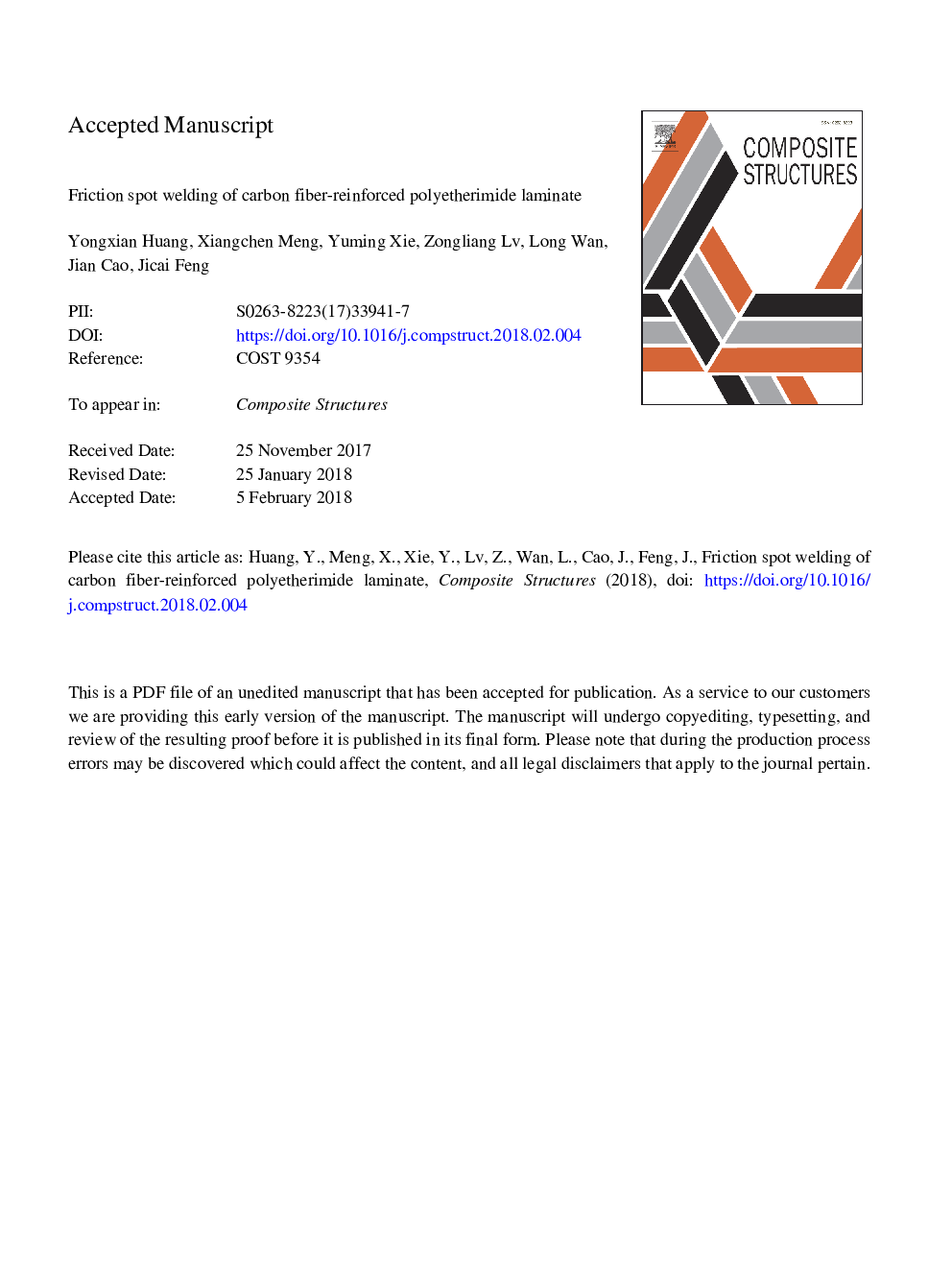| Article ID | Journal | Published Year | Pages | File Type |
|---|---|---|---|---|
| 6704111 | Composite Structures | 2018 | 27 Pages |
Abstract
Here, carbon fiber-reinforced polyetherimide (PEI) laminate was joined via friction spot welding (FSpW). The feasibility and fracture mechanism of the FSpW joints were investigated. The sound joint with smooth surface and without hook defect was achieved. The strong bonding formed at the sleeve stirring zone and thermo-mechanically affected zone, resulting from the macromolecular interdiffusion and interlocking of the smashed carbon fiber at the bonding interface by thermo-mechanical behavior. Increasing rotational velocity enhanced the mixing degree of the carbon fiber at the interface and strengthened the bonding interface, which improved tensile shear properties. The maximum tensile shear load of the FSpW joint with a joining area of 66.4â¯mm2 reached 1600â¯N, which was comparable to the strength of state-of-the-art welding. The fracture surface morphologies revealed a typical ductile fracture containing the deformation of polymer and the pull-out of the carbon fiber. The FSpW has feasible and potential to join carbon fiber-reinforced thermoplastic composites laminate.
Related Topics
Physical Sciences and Engineering
Engineering
Civil and Structural Engineering
Authors
Yongxian Huang, Xiangchen Meng, Yuming Xie, Zongliang Lv, Long Wan, Jian Cao, Jicai Feng,
